Do you have a question about the YASKAWA G7 Series and is the answer not in the manual?
Checks to perform immediately upon delivery: verify model, inspect for damage, check component tightness.
Provides exterior diagrams and dimensions for Open Chassis (IP00) and Enclosed Wall-mounted (IP20, NEMA 1) Drives.
Guidelines for selecting an installation site, controlling ambient temperature, and protecting the Drive from foreign matter.
Details the required installation space horizontally and vertically for optimal heat dissipation and proper installation.
Procedure for removing and attaching the terminal cover to wire cables to control and main circuit terminals.
Explains methods for removing and attaching the Digital Operator and Front Cover for accessing internal components.
Provides a detailed connection diagram of the Drive, illustrating main circuits, control circuit terminals, and digital operator connections.
Shows the terminal arrangement for 200-240 V Class Drives, detailing the layout of main and control circuit terminals.
Details applicable wire sizes, connectors, terminal functions, and configurations for wiring main circuit terminals.
Covers wire sizes, connectors, terminal functions, and wiring precautions for control circuit terminals.
Provides models, specifications, and mounting instructions for installing and wiring optional cards like PG Speed Control and Communications Cards.
Explains the Digital Operator's use for programming, operating, monitoring, and copying parameters, detailing display elements and keys.
Describes the Drive's five modes: Drive, Quick Programming, Advanced Programming, Verify, and Autotuning, with their primary functions.
Details the step-by-step procedure for performing trial operation of the Drive according to a flowchart.
Guides setting essential user parameters like Control Method, Reference Selection, and Run Command Selection in Quick Programming mode.
Explains autotuning methods based on control method, guiding settings in Quick Programming and Autotuning modes.
Explains the procedure to automatically set motor parameters using vector control or stationary autotuning for line-to-line resistance.
Offers suggestions for adjusting parameters to resolve issues like hunting, vibration, or poor torque response encountered during trial operation.
Explains user parameter table structure and fields like Parameter Number, Name, Description, and Control Methods.
Illustrates the Digital Operator display hierarchy and functions for modes like Drive, Quick Programming, and Advanced Programming.
Provides detailed tables of user parameters, categorized by function, showing settings and control method applicability.
Explains how to input the frequency reference via Operator, Terminals, Serial Com, Option Card, or Pulse Train.
Explains input methods for the run command, detailing source selection and operations via Digital Operator or control circuit terminals.
Describes Drive stopping methods: Deceleration to stop, Coast to stop, DC braking stop, and Coast to stop with timer.
Explains acceleration/deceleration times, S-curve characteristics, dwell function, and preventing motor stalling.
Explains how to limit the motor speed by setting maximum and minimum output frequency using parameters d2-01, d2-02, and d2-03.
Explains functions for improving motor operating efficiency, including slip compensation, torque compensation, hunting prevention, and stabilizing speed.
Explains functions for protecting the machine, including noise reduction, torque limiting, stall prevention, and overload/overheating protection.
Describes functions for continuing or automatically restarting Drive operation after errors, including power loss recovery and speed search.
Explains functions for protecting the Drive and braking resistor, including overheating protection and pre-alarm warning levels.
Explains input terminal functions, setting operating methods by switching functions for multi-function contact input terminals.
Explains analog monitor and pulse monitor parameters, including selecting analog monitor items and adjusting them using gain and bias.
Explains various individual functions like MODBUS Communications, Timer Function, PID Control, Energy-saving, and Zero Servo.
Details Digital Operator functions: setting parameters, switching monitors, disabling keys, and copying parameters.
Details available digital output cards, analog reference cards, digital reference cards, communications cards, and PG Speed Control Cards.
Describes alarm functions including fault, alarm, operation error, and autotuning errors with causes and corrective actions.
Explains how the Drive detects faults, operates fault contacts, shuts off output, and displays fault codes on the Digital Operator.
Describes alarms that do not operate fault contacts, returning the system to original status once the cause is removed.
Explains operation errors from invalid settings or contradictions, and how to identify and correct their causes.
Lists autotuning errors like Data Invalid, Minor Fault, STOP key, Resistance error, No-Load Current error, Rated Slip error, etc.
Provides guidance on troubleshooting Drive and motor operation issues caused by parameter settings, wiring, or other factors.
Provides the maintenance period: within 18 months of shipping or 12 months of delivery, whichever comes first.
Lists items to check during operation: motor vibration, noise, heat, ambient temperature, output current, and cooling fan.
Details checks during periodic maintenance, emphasizing power OFF and waiting for charge indicator to extinguish.
Explains periodic inspections and part replacement for optimal Drive function and longevity, covering cooling fan, capacitors, and fuses.
Provides instructions for replacing the cooling fan on drives of 15 kW or less, detailing removal and mounting procedures.
Explains how to remove and mount the control circuit terminal card without disconnecting cables, emphasizing charge indicator status.
Lists standard Drive specifications by capacity, including model numbers, output ratings, and voltage/frequency.
Provides specifications for available options and peripheral devices like PG cards, reference cards, communications cards, and output cards.
Details the five control modes of Varispeed G7 Drives: V/f, V/f with PG, Open-loop vector 1, Flux vector, and Open-loop vector 2.
Provides precautions for selecting, installing, setting, and handling Drives, including reactor installation and emergency stop.
Offers precautions when using standard and special motors with the Drive, covering low speed ranges, installation withstand voltage, and vibration.
Information regarding conformance to UL and CE markings, including directives and requirements for input fuses and enclosures.
Provides UL-compatible input fuse requirements for conforming to Low Voltage Directive/UL, detailing voltage, current, and fusing I2t specifications.
Explains EMC Directive conformance and installation methods for ensuring machinery and installation compliance, including noise filters and DC reactors.
Checks to perform immediately upon delivery: verify model, inspect for damage, check component tightness.
Provides exterior diagrams and dimensions for Open Chassis (IP00) and Enclosed Wall-mounted (IP20, NEMA 1) Drives.
Guidelines for selecting an installation site, controlling ambient temperature, and protecting the Drive from foreign matter.
Details the required installation space horizontally and vertically for optimal heat dissipation and proper installation.
Procedure for removing and attaching the terminal cover to wire cables to control and main circuit terminals.
Explains methods for removing and attaching the Digital Operator and Front Cover for accessing internal components.
Provides a detailed connection diagram of the Drive, illustrating main circuits, control circuit terminals, and digital operator connections.
Shows the terminal arrangement for 200-240 V Class Drives, detailing the layout of main and control circuit terminals.
Details applicable wire sizes, connectors, terminal functions, and configurations for wiring main circuit terminals.
Covers wire sizes, connectors, terminal functions, and wiring precautions for control circuit terminals.
Provides models, specifications, and mounting instructions for installing and wiring optional cards like PG Speed Control and Communications Cards.
Explains the Digital Operator's use for programming, operating, monitoring, and copying parameters, detailing display elements and keys.
Describes the Drive's five modes: Drive, Quick Programming, Advanced Programming, Verify, and Autotuning, with their primary functions.
Details the step-by-step procedure for performing trial operation of the Drive according to a flowchart.
Guides setting essential user parameters like Control Method, Reference Selection, and Run Command Selection in Quick Programming mode.
Explains autotuning methods based on control method, guiding settings in Quick Programming and Autotuning modes.
Explains the procedure to automatically set motor parameters using vector control or stationary autotuning for line-to-line resistance.
Offers suggestions for adjusting parameters to resolve issues like hunting, vibration, or poor torque response encountered during trial operation.
Explains user parameter table structure and fields like Parameter Number, Name, Description, and Control Methods.
Illustrates the Digital Operator display hierarchy and functions for modes like Drive, Quick Programming, and Advanced Programming.
Provides detailed tables of user parameters, categorized by function, showing settings and control method applicability.
Explains how to input the frequency reference via Operator, Terminals, Serial Com, Option Card, or Pulse Train.
Explains input methods for the run command, detailing source selection and operations via Digital Operator or control circuit terminals.
Describes Drive stopping methods: Deceleration to stop, Coast to stop, DC braking stop, and Coast to stop with timer.
Explains acceleration/deceleration times, S-curve characteristics, dwell function, and preventing motor stalling.
Explains how to limit the motor speed by setting maximum and minimum output frequency using parameters d2-01, d2-02, and d2-03.
Explains functions for improving motor operating efficiency, including slip compensation, torque compensation, hunting prevention, and stabilizing speed.
Explains functions for protecting the machine, including noise reduction, torque limiting, stall prevention, and overload/overheating protection.
Describes functions for continuing or automatically restarting Drive operation after errors, including power loss recovery and speed search.
Explains functions for protecting the Drive and braking resistor, including overheating protection and pre-alarm warning levels.
Explains input terminal functions, setting operating methods by switching functions for multi-function contact input terminals.
Explains analog monitor and pulse monitor parameters, including selecting analog monitor items and adjusting them using gain and bias.
Explains various individual functions like MODBUS Communications, Timer Function, PID Control, Energy-saving, and Zero Servo.
Details Digital Operator functions: setting parameters, switching monitors, disabling keys, and copying parameters.
Details available digital output cards, analog reference cards, digital reference cards, communications cards, and PG Speed Control Cards.
Describes alarm functions including fault, alarm, operation error, and autotuning errors with causes and corrective actions.
Explains how the Drive detects faults, operates fault contacts, shuts off output, and displays fault codes on the Digital Operator.
Describes alarms that do not operate fault contacts, returning the system to original status once the cause is removed.
Explains operation errors from invalid settings or contradictions, and how to identify and correct their causes.
Lists autotuning errors like Data Invalid, Minor Fault, STOP key, Resistance error, No-Load Current error, Rated Slip error, etc.
Provides guidance on troubleshooting Drive and motor operation issues caused by parameter settings, wiring, or other factors.
Provides the maintenance period: within 18 months of shipping or 12 months of delivery, whichever comes first.
Lists items to check during operation: motor vibration, noise, heat, ambient temperature, output current, and cooling fan.
Details checks during periodic maintenance, emphasizing power OFF and waiting for charge indicator to extinguish.
Explains periodic inspections and part replacement for optimal Drive function and longevity, covering cooling fan, capacitors, and fuses.
Provides instructions for replacing the cooling fan on drives of 15 kW or less, detailing removal and mounting procedures.
Explains how to remove and mount the control circuit terminal card without disconnecting cables, emphasizing charge indicator status.
Lists standard Drive specifications by capacity, including model numbers, output ratings, and voltage/frequency.
Provides specifications for available options and peripheral devices like PG cards, reference cards, communications cards, and output cards.
Details the five control modes of Varispeed G7 Drives: V/f, V/f with PG, Open-loop vector 1, Flux vector, and Open-loop vector 2.
Provides precautions for selecting, installing, setting, and handling Drives, including reactor installation and emergency stop.
Offers precautions when using standard and special motors with the Drive, covering low speed ranges, installation withstand voltage, and vibration.
Information regarding conformance to UL and CE markings, including directives and requirements for input fuses and enclosures.
Provides UL-compatible input fuse requirements for conforming to Low Voltage Directive/UL, detailing voltage, current, and fusing I2t specifications.
Explains EMC Directive conformance and installation methods for ensuring machinery and installation compliance, including noise filters and DC reactors.
| Series | G7 |
|---|---|
| Frequency | 50/60 Hz |
| Output Voltage | Matches Input Voltage |
| Control Method | V/f Control |
| Overload Capacity | 150% for 60 seconds |
| Protection Features | Overcurrent, Overvoltage, Undervoltage, Overheating, Short Circuit |
| Communication | RS-485, Modbus, DeviceNet, Profibus, Ethernet |
| Safety | Safe Torque Off (STO) |
| Operating Temperature | -10°C to 50°C |
| Humidity | 5% to 95% (non-condensing) |
| Cooling Method | Fan Cooled |
| Enclosure Rating | IP20 |
| Storage Temperature | -20°C to 65°C |
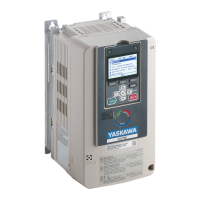
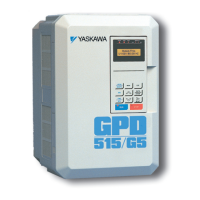
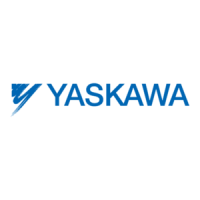
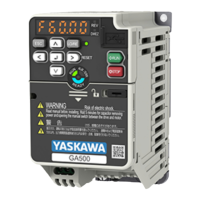

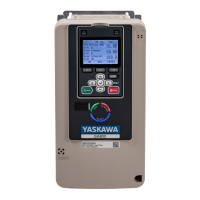
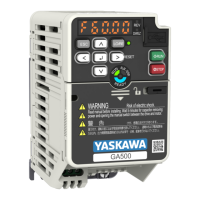

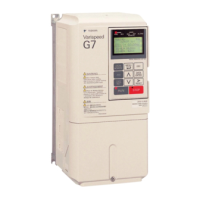
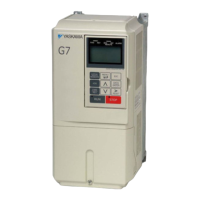

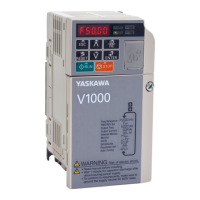
